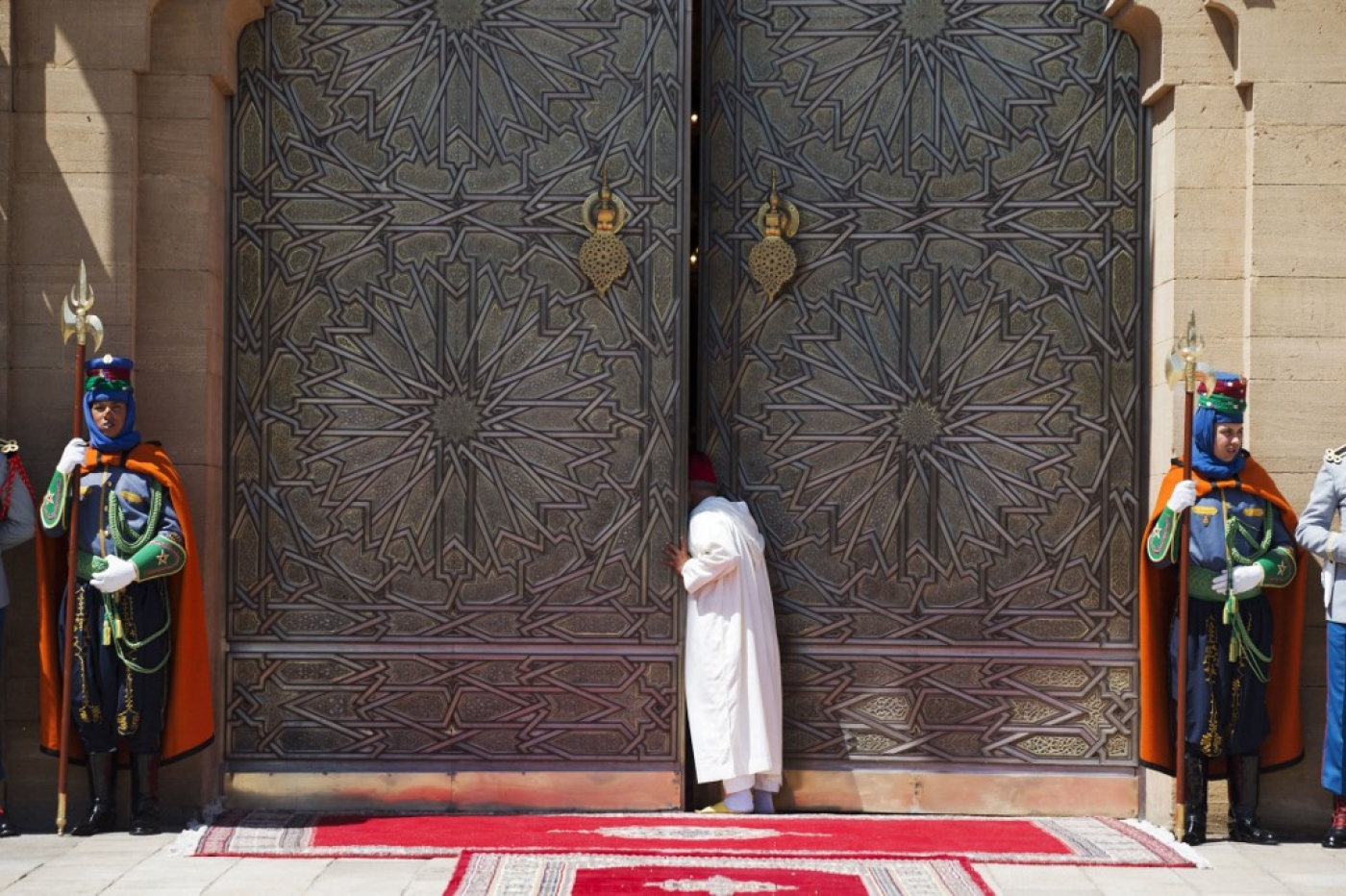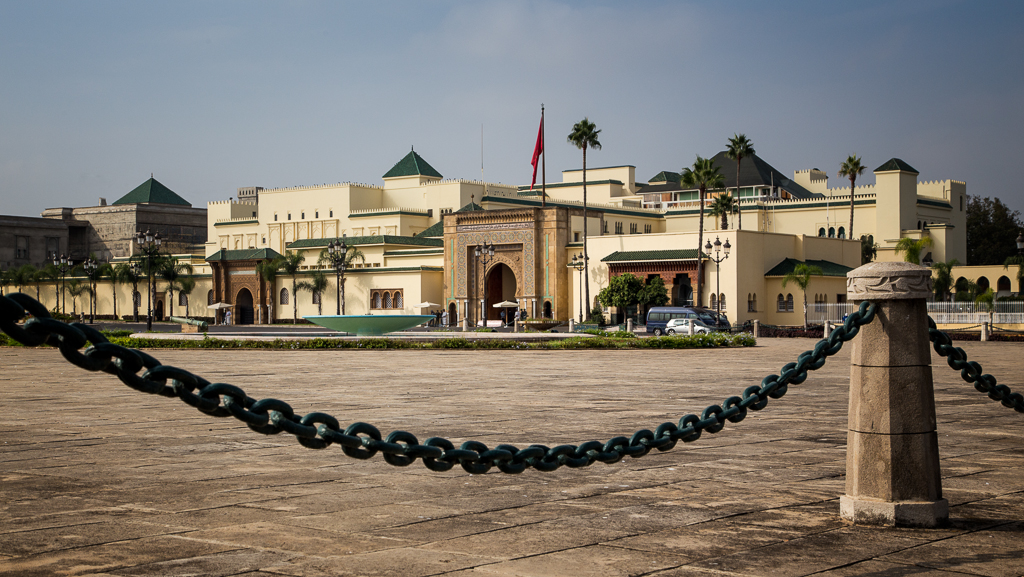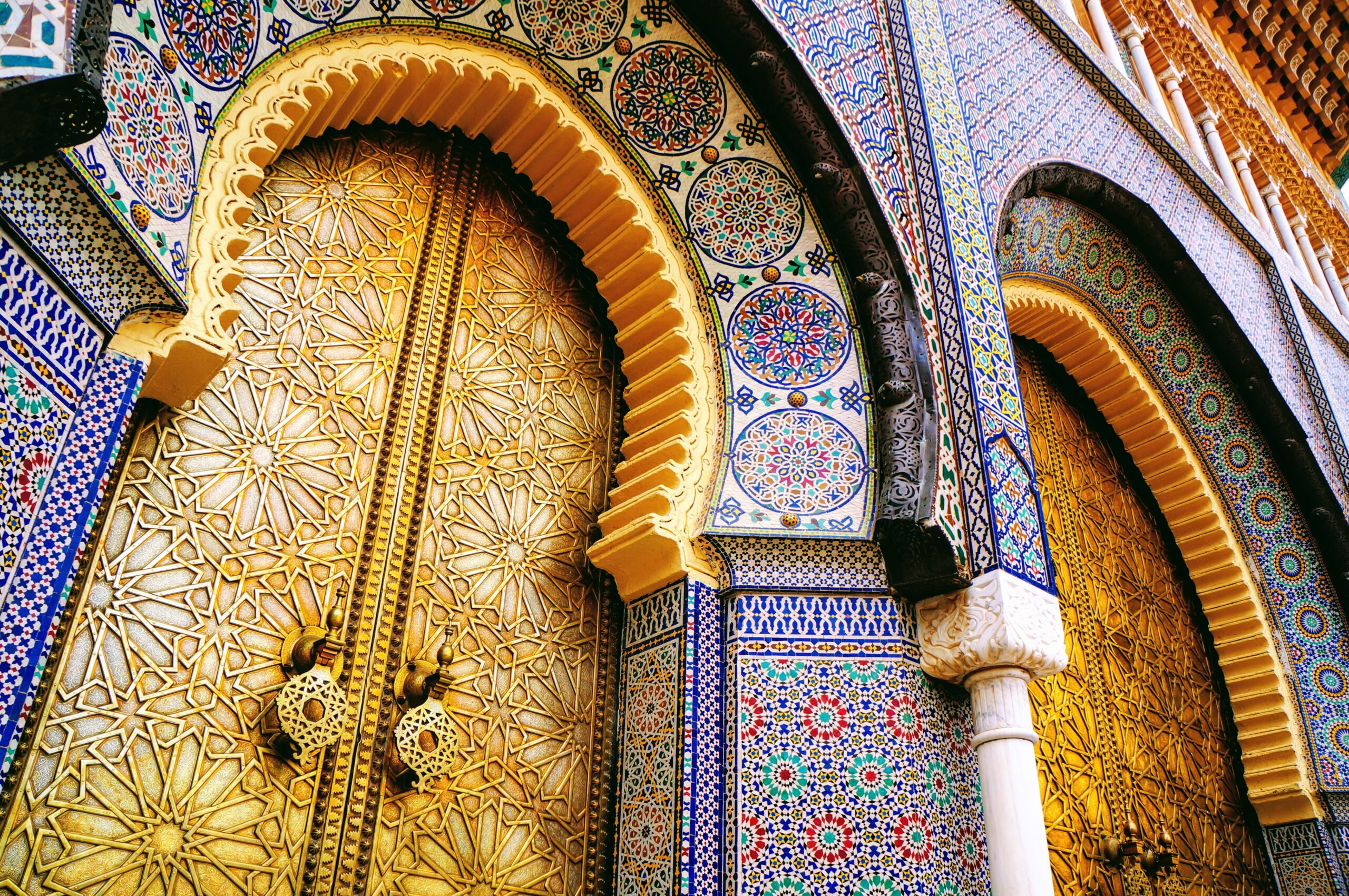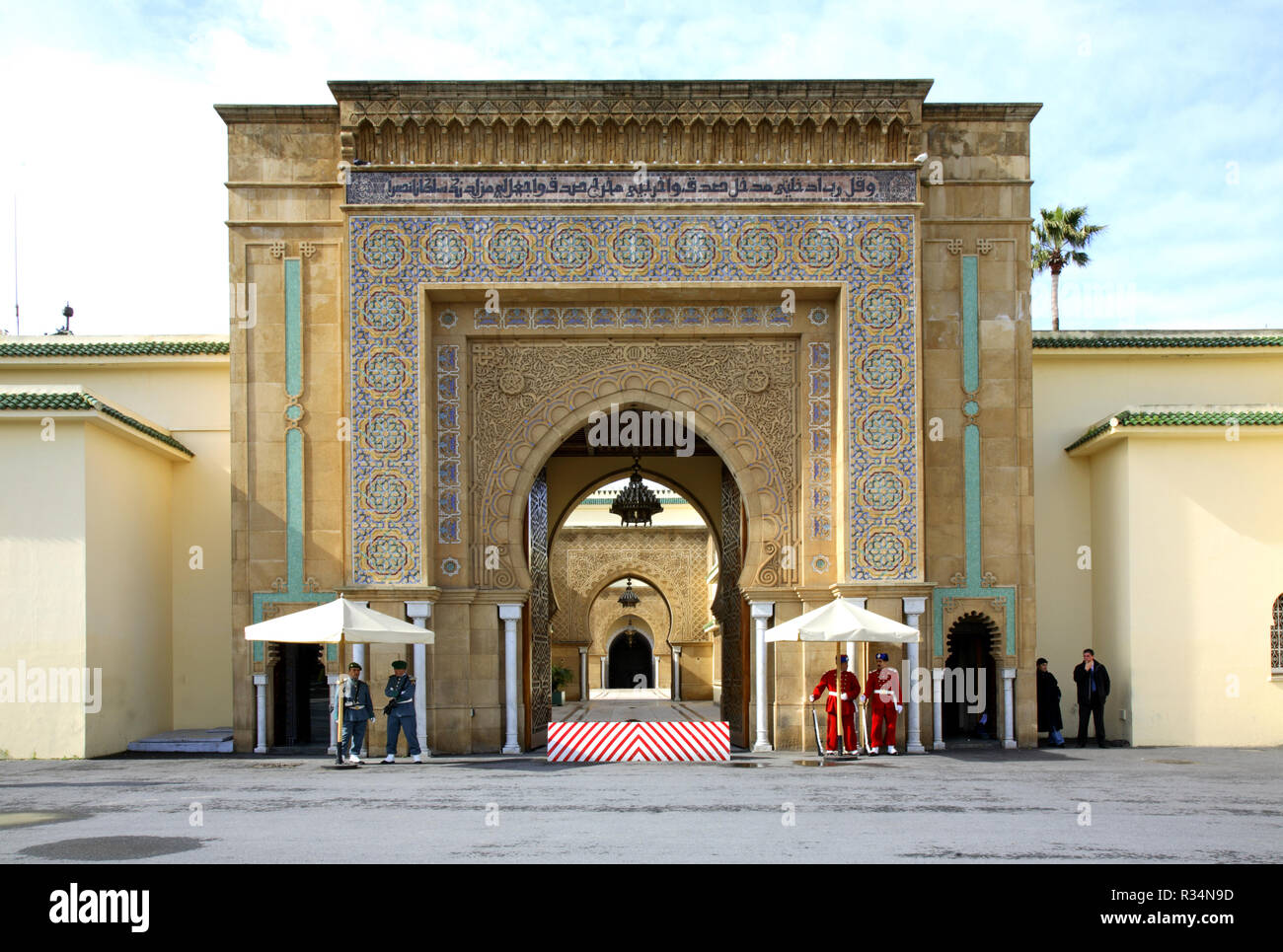Discover the Royal Palace of Rabat: The Heart of Moroccan Monarchy
I. Introduction to the Royal Palace of Rabat
History and significance of the palace
The Royal Palace of Rabat, also known as Dar al-Makhzen, holds a significant place in Moroccan history and is the official residence of the King of Morocco. The palace has been the seat of power for the Moroccan monarchy since the reign of King Mohammed VI. It is an important symbol of the country's monarchy and plays a vital role in the ceremonial and administrative affairs of the kingdom. The palace is not open to the public, but its presence and grandeur are awe-inspiring.
Location and architectural features
Located in the heart of Rabat, the capital city of Morocco, the Royal Palace is within the walled area known as the Kasbah of the Udayas. This fortified area is perched on a hill overlooking the Bou Regreg River and provides a breathtaking view of the city and coastline. The palace is an architectural marvel, showcasing a blend of traditional Moroccan design and modern influences.
The palace's exterior is adorned with intricate decorative details, including beautiful mosaic tiles, ornate gates, and grand archways. The architecture reflects Moroccan craftsmanship and showcases the country's rich cultural heritage. The palace's imposing facade, with its high walls and fortified gates, gives a sense of grandeur and exclusivity.
The palace is equally lavish, with opulent reception rooms, beautifully landscaped gardens, and stunning courtyards. The interior design features traditional Moroccan motifs, luxurious furnishings, and intricate tilework. Visitors to the palace would be mesmerized by the rich colours, elaborate chandeliers, and grand staircases that exude regal elegance.
While the palace is not open to the public, visitors can still admire its impressive facade and enjoy the surrounding area, which offers stunning views of the palace and the nearby Kasbah of the Udayas. The Royal Palace of Rabat is a must-see destination for those interested in Moroccan history, culture, and architecture.
For more information about the Royal Palace of Rabat, you can visit this Wikipedia page, which provides detailed insights into the palace's history and significance.

II. General Information about the Royal Palace
Purpose and functions of the palace
The Royal Palace, located in Rabat, is the official residence of the King of Morocco and the symbol of the Moroccan monarchy. It centres political and administrative activities and ceremonial and official events. The palace also houses various government offices and serves as a venue for diplomatic meetings and foreign visits.
The palace complex spans an area of approximately 2.5 square kilometres and is surrounded by high walls and lush gardens. It reflects the architectural style of Moroccan traditions, with intricate mosaics, colourful tiles, and stunning stonework. The palace showcases the rich cultural heritage and craftsmanship of Morocco.
Access and visitor information
While the Royal Palace is primarily a working palace and not open to the public, visitors can still admire its grandeur outside the palace gates. The main entrance of the palace, called Bab al-Makhzen, is an impressive gateway that offers a glimpse into the palace's splendour. The entrance is guarded by mounted guards in traditional uniforms, adding to the regal atmosphere.
Visitors can marvel at the palace facade's ornate design and architectural details, including the intricately carved wooden doors and decorative motifs. The palace is particularly stunning when illuminated at night, with its exterior lighting showcasing the beauty of its unique design.
If you're interested in learning more about the history and significance of the Royal Palace, guided tours are available in Rabat. Local tour operators offer informative tours that provide insights into the palace's history, Moroccan monarchy, and the country's cultural heritage. These tours often include visits to other significant landmarks in Rabat, such as the Hassan Tower and the Kasbah of the Udayas.
While you may not be able to enter the Royal Palace, exploring the surrounding area and experiencing its grandeur from the outside will give you a sense of the historical and cultural importance of the Moroccan monarchy.
To learn more about the Royal Palace of Rabat, you can visit this Wikipedia page.

III. Main Attractions of the Royal Palace
The main gate and facade
One of the main attractions of the Royal Palace in Rabat is its impressive main gate and facade. The gate is beautifully adorned with intricate designs and patterns, showcasing the exquisite craftsmanship of Moroccan artisans. The palace's facade is equally stunning, with its grandeur and architectural beauty. Visitors will be in awe of the majestic presence of the palace as they approach the main gate.
Courtyards, gardens, and fountains
The Royal Palace is known for its beautiful courtyards, gardens, and fountains, adding charm and allure. The courtyards are meticulously landscaped and feature well-manicured gardens with vibrant flowers and lush greenery. Visitors can stroll through the courtyards, immersing themselves in the serene and peaceful ambience. The fountains throughout the palace complex offer a soothing and tranquil atmosphere, providing a perfect escape from the bustling city outside.
Royal stables and horses
The Royal Palace is also home to a magnificent collection of horses housed in its royal stables. These horses are well-cared for and play a significant role in ceremonial events and parades. Visitors can glimpse these majestic animals and learn about their importance in Moroccan culture.
Visiting the Royal Palace in Rabat is a unique opportunity to witness the grandeur and beauty of the Moroccan monarchy. The main attractions that make this palace a must-visit destination are the main gate and facade, courtyards, gardens, fountains, and royal stables.
For more information about the Royal Palace in Rabat, you can visit the Wikipedia page.

IV. The Royal Palace Museum
History and collections of the museum
The Royal Palace Museum, located in the heart of Rabat, Morocco, is a must-visit attraction for history enthusiasts and those interested in the rich culture of Morocco. Housed within the walls of the Royal Palace, the museum offers a fascinating glimpse into the history and heritage of the Moroccan monarchy.
Originally built in the mid-19th century as a residence for King Mohammed IV, the Royal Palace has served as the official residence of Moroccan kings and their families ever since. In recent years, the palace has opened its doors to the public, allowing visitors to explore its stunning architecture and learn about the country's royal history.
Inside the museum, visitors can explore a vast collection of artefacts and historical objects that showcase Morocco's rich cultural heritage. The museum's exhibits cover various aspects of Moroccan history, including its ancient civilizations, Islamic art, and royal traditions. Visitors can see intricate ceramics, beautiful textiles, ancient manuscripts, and exquisite jewellery, all providing insights into Morocco's past.
Notable artefacts and exhibits
One of the most notable exhibits in the Royal Palace Museum is the collection of royal regalia, including ornate crowns, sceptres, and ceremonial robes. These artefacts showcase the grandeur and opulence of the Moroccan monarchy throughout history.
Another highlight of the museum is its display of ancient manuscripts and calligraphy. Morocco has a rich tradition of Islamic art and literature, and the museum's collection includes beautifully illuminated Qur'ans and other religious texts that highlight the country's cultural and artistic achievements.
Additionally, the museum features a range of artworks that demonstrate the diversity of Moroccan artistic traditions. Visitors can admire exquisite ceramics and pottery, intricate wood carvings, and vibrant carpets and textiles, all reflecting the country's unique artistic heritage.
The Royal Palace Museum is an important cultural institution that allows visitors to understand Moroccan history and the monarchy's role in the country's development. Whether you are interested in ancient civilizations or Islamic art or want to immerse yourself in Morocco's rich heritage, visiting the Royal Palace Museum is a must.

V. Changing the Guard Ceremony
Significance and schedule of the ceremony
The Changing the Guard Ceremony at the Royal Palace of Rabat is a significant event showcasing the Moroccan monarchy's deep-rooted traditions and rich history. This ceremony takes place every day and attracts visitors worldwide eager to witness this royal spectacle.
The ceremony usually starts around 10:00 AM and lasts for about 30 minutes. It is advisable to arrive a bit earlier to secure a good viewing spot, as the ceremony draws large crowds, especially during peak tourist seasons.
Traditions and rituals observed
During the Changing, the Guard Ceremony, the Royal Guard, known as the Sûreté Royale, performs a meticulously choreographed routine that pays homage to Moroccan traditions and military discipline. Here are some of the key rituals and traditions observed during the ceremony:
1. March and Formation: The ceremony begins with a marching band playing traditional Moroccan music as the Royal Guard arrives in formation. The guards march with precision and unity in elaborate uniforms with vibrant colours and ornate details.
2. Handover of the Flag: At a designated moment, the Commander of the Guard hands over the national flag to the incoming Guard Commander, symbolizing the transfer of responsibilities and the continuity of the monarchy.
3. Inspection of the Guard: Following the handover, the senior officers inspect the troops to ensure they are dressed impeccably and standing at attention. This tradition dates back centuries and highlights the importance of discipline and professionalism within the Royal Guard.
4. Precision Drill Movements: The Guard then performs precision drill movements, which include intricate footwork, rifle handling, and synchronized formations. These movements showcase the Guards' skills, discipline, and unity.
5. Mounted Horse Guard Display: Besides the traditional foot procession, the ceremony includes a display by the Mounted Horse Guard. These highly trained horsemen demonstrate their equestrian skills and execute synchronized manoeuvres.
The Changing the Guard Ceremony at the Royal Palace of Rabat is a visual spectacle and a cultural experience that highlights the pride and heritage of Morocco. It offers visitors a glimpse into the history and traditions of the Moroccan monarchy and leaves a lasting impression on all who witness it.
To learn more about the Royal Palace of Rabat and its significance, visit here.
VI. Visiting Tips and Etiquette
Guidelines for visiting the Royal Palace
When visiting the Royal Palace of Rabat, respecting the rules and guidelines is important to have a pleasant and respectful experience. Here are some guidelines to keep in mind:
-
Respect the Security Measures: The Royal Palace is a highly secure area, and visitors must pass security checks before entering. Cooperate with the security personnel and follow their instructions.
-
Observe the Opening Hours: The Royal Palace has specific visiting hours, and it's important to check the timings before planning your visit. Note that the Palace is closed to the public during official ceremonies and events.
-
Maintain Decorum: As the official residence of the King of Morocco, the Royal Palace is a place of great respect and significance. Avoid any behaviour that may be considered disrespectful or inappropriate.
-
Do Not Enter Restricted Areas: Certain areas of the Royal Palace are off-limits to the public, and it's important to adhere to the designated visiting areas. Follow the guidance of the staff and avoid crossing any barriers.
-
Stay in Designated Visitor Paths: Follow the marked paths and stay within the designated visitor areas. This will help ensure the preservation of the Palace and its surroundings.
Dress code and photography restrictions
When visiting the Royal Palace, it's important to adhere to certain dress codes and photography restrictions to show respect for the Moroccan monarchy:
-
Dress Code: Dress modestly and conservatively. Both men and women should avoid wearing too revealing or provocative clothing. It is recommended to cover shoulders, knees, and cleavage.
-
Photography Restrictions: Photography is generally not allowed inside the Royal Palace. Respect any signs or instructions regarding photography restrictions. However, you may be able to take pictures of the exterior and surrounding areas.
-
Be Mindful of Privacy: Remember that the Royal Palace remains an active residence for the monarchy. Avoid taking pictures of the guards or any security personnel, as it may be considered a breach of privacy.
-
Follow Cultural Norms: Moroccan culture highly values respect and modesty. Be mindful of cultural sensitivities and customs when visiting the Royal Palace.
Visiting the Royal Palace of Rabat is an opportunity to witness the grandeur and history of the Moroccan monarchy. You can ensure a memorable and respectful visit by following these guidelines and respecting the rules and regulations.
